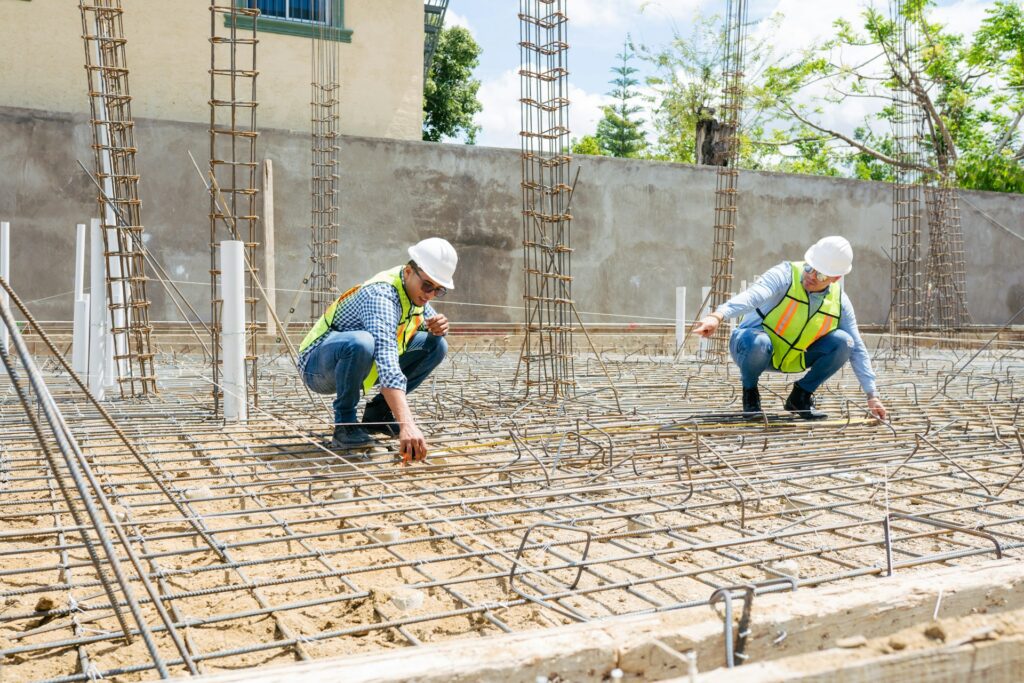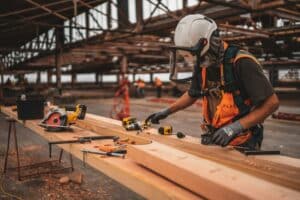Building in Thailand involves more than just creating structures. It’s about ensuring that each project is safe for everyone involved, from the workers to the future occupants. The construction process here brings unique challenges, including compliance with local building codes, which ensure that buildings can withstand the region’s specific environmental conditions. A firm understanding of these regulations is essential for a successful construction project.
The choice of materials also plays a vital role in the overall safety of a building project. With Thailand’s tropical climate, selecting the right materials helps prevent accidents and ensures durability against natural elements. Alongside quality materials, proper training and supervision on construction sites ensure that safety protocols are followed and risks are minimized.
Safety should always be a top priority during any building project. Implementing strict safety measures and regular audits can prevent accidents and protect workers. This approach not only safeguards those on site but also contributes to the creation of resilient and secure structures that can stand the test of time.
Understanding Local Building Codes
In Thailand, adhering to local building codes is crucial for ensuring safety and legality. These regulations are designed to safeguard the structural integrity of buildings and protect those working on and living in these structures. Familiarizing yourself with these rules is essential before beginning any construction project.
Building codes in Thailand address several aspects such as structural stability, fire safety, and environmental impact. One key area is earthquake resistance, given the country’s vulnerability to seismic activities. Ensuring that structures can withstand potential earthquakes is not just a legal requirement but also a moral one. Additionally, fire safety standards mandate the inclusion of fire exits, alarms, and proper electrical installations. This reduces the risk of fire-related incidents, creating safer environments for everyone.
Construction plans must be reviewed and approved by the local authorities to ensure compliance. It’s important to engage with professionals who understand the nuances of Thai regulations and can help navigate the approval process. Breaking down these complex regulations into manageable tasks not only helps in securing the necessary permits but also ensures that projects are completed without costly errors or delays. Being proactive in understanding these rules is vital to the success and safety of any construction endeavor.
Selecting Quality Materials for Safety
Choosing the right materials is a fundamental step in building safely in Thailand. The climate poses specific challenges such as high humidity, intense heat, and occasional heavy rains. These factors need careful consideration when selecting materials that ensure both safety and durability.
Some of the best materials suited for the Thai climate include:
1. Concrete: Known for its strength and ability to withstand high moisture levels, making it ideal for the tropical weather.
2. Brick: Offers excellent thermal properties, providing a cooler interior during hot months.
3. Steel: Used for reinforcing structures, it offers great resistance to wind forces, which is important in storm-prone areas.
4. Wind-resistant Glass: Essential for windows and facades to prevent shattering during strong winds.
Using quality materials not only enhances the lifespan of a building but also minimizes the risk of structural failures. For instance, using substandard steel can lead to collapses under pressure, while poor-quality bricks may deteriorate quickly under constant exposure to rain. By investing in the best materials, builders can ensure that their structures are safe, reliable, and long-lasting.
Quality materials contribute substantially to reducing maintenance costs and enhancing the safety of construction projects. It is prudent to collaborate with suppliers who provide certified materials that meet industry standards. This ensures that the building project aligns with safety expectations and withstands the challenges posed by Thailand’s diverse environment.
Importance of Professional Training and Supervision
In construction, having a qualified team is crucial for ensuring safety and efficiency. Workers need proper training to handle equipment safely and to follow construction protocols. This knowledge reduces the chance of accidents and helps maintain a smooth building process. Trained workers are more aware of potential hazards and know how to respond appropriately if issues arise.
Supervision on-site plays a significant role in keeping the construction project on track and ensuring safety standards are upheld. Supervisors are responsible for checking that all workers wear safety gear like hard hats and gloves. They oversee the daily operations, making sure that the building plans are followed precisely. This oversight helps prevent mistakes that could lead to structural issues or delays in the project. Supervisors also conduct regular safety briefings to keep everyone informed about new safety practices and any changes to the project plan.
Having knowledgeable supervisors on-site ensures a culture of safety, where every team member understands their role in preventing accidents. This approach not only protects workers but also results in a high-quality, durable building structure that meets all necessary safety and construction standards.
Implementing Safety Protocols on Site
Ensuring safety on a construction site involves implementing a comprehensive set of protocols. These measures minimize risks and protect everyone involved in the project. Here is a checklist of essential safety measures:
– Personal Protective Equipment (PPE): Ensure all workers use PPE, including helmets, gloves, and safety goggles, to protect against injuries.
– Emergency Procedures: Clearly outline and regularly rehearse emergency plans. This includes evacuation routes and procedures in case of fire or serious incidents.
– First Aid Readiness: Have a well-stocked first aid kit on-site and ensure a trained first aider is always available.
– Tool and Equipment Checks: Conduct regular inspections of tools and machinery to ensure they are in good working condition and free from defects.
– Hazard Communication: Use signs and labels to clearly mark hazardous areas and potential risks to keep workers informed.
Regular safety audits are critical in identifying potential risks before they lead to accidents. These audits assess compliance with safety protocols and check that all equipment and procedures meet local safety standards. Conducting an audit allows management to identify areas for improvement and take corrective action quickly, thus maintaining a safe and productive work environment.
Ensuring Safe Construction Practices
Safety should be the foundation of any construction project, particularly in Thailand’s dynamic building environment. By familiarizing yourself with Thai building codes, selecting quality materials, and ensuring professional supervision, you can make safety a priority. Implementing and continuously reviewing safety protocols safeguards workers and improves the overall quality of the construction project.
For those about to embark on building projects, it is essential to integrate comprehensive safety measures right from the planning stage. This not only fulfills legal requirements but also ensures the peace of mind that comes with knowing your project is being developed responsibly. Prioritizing safety leads to successful project completion and a lasting, resilient structure.
As you prepare to begin your Thailand construction journey, remember that building safely is a team effort. If you’re planning to build in Thailand, reach out to CJ Samui Builders for expert guidance and support. Our commitment to safety and quality means you can trust us to handle your project with care and precision. Let’s work together to bring your vision to life, safely and efficiently.




